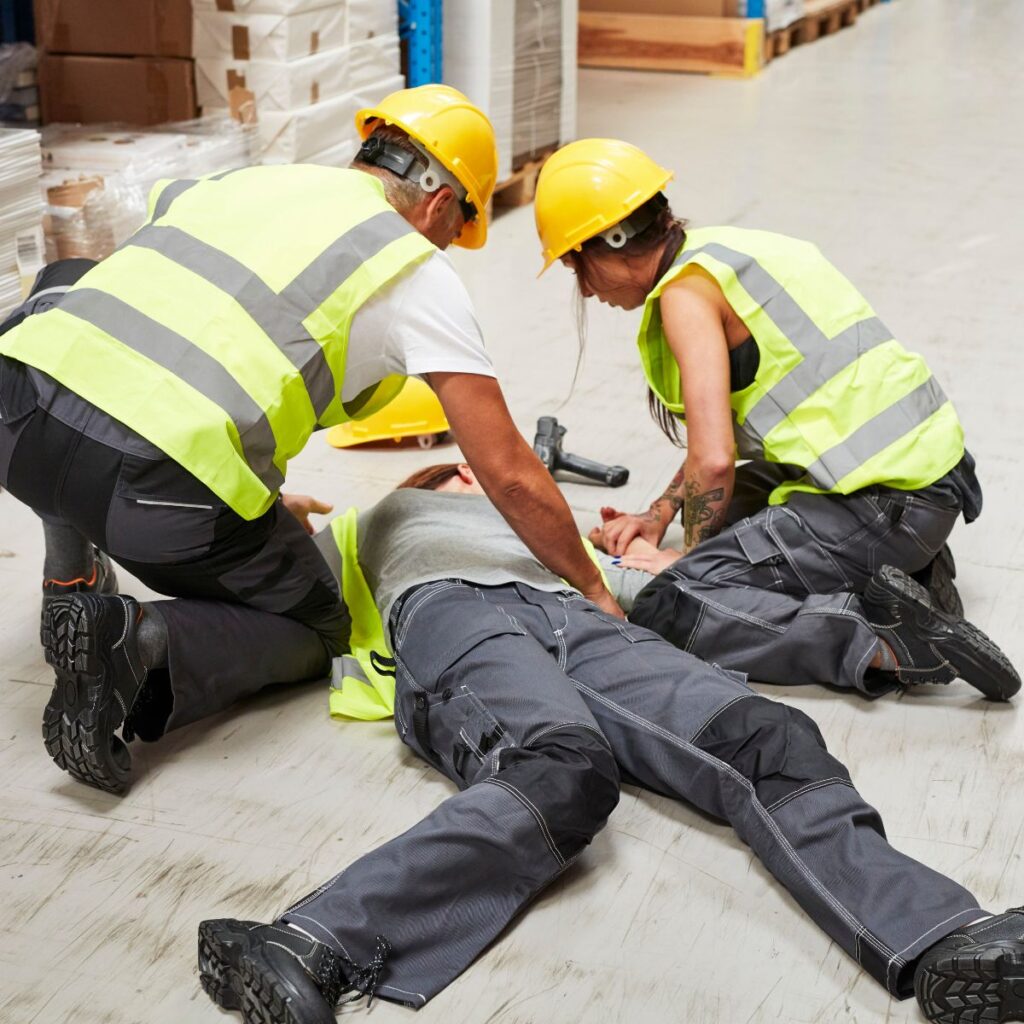18 Apr 2024

The health & safety of employees and others who could be affected by your operations is of paramount importance. However, despite implementing health & safety preventative measures, you can have an accident in the workplace. This can be quite a scary situation and people may panic or freeze, particularly if the accident is serious. Nobody wants to talk about accidents, but if an incident occurs, your employees must know what to do. Their actions are critical and can hugely affect recovery of the person injured and prevent any further issues occurring.
These 7 steps below detail exactly what should be done if an accident occurs. It would be useful to discuss these with employees during the consultation process and to communicate company procedures via a toolbox talk, putting up posters or handing out flyers
Medical attention is obviously the first step that should be taken if an accident occurs in the workplace. If the injury is too serious for trained first-aiders to deal with, make sure you call an ambulance, do not delay. If it is a minor accident, assess the injuries and ensure that once first aid is given. Where appropriate, the injured person should be advised to seek further assistance from a doctor or hospital. A Supervisor or Manager should be notified asap.
The main reason you must secure the scene is to make the area safe to prevent any further accidents occurring. This may mean evacuating employees, putting up temporary screens or cordon to keep everyone away from any immediate risk. It is also imperative to protect the scene to preserve any evidence so an investigation can take place.
You need to ensure that anyone that was in or near the area is accounted for.
An employer can screen an employee after an accident in the workplace occurs, this should only be carried out if there is reasonable suspicion that the accident is drug/alcohol related. It is important that any such testing is carried out in accordance with company HR procedures and within legal requirements.
An employer has an obligation to investigate accidents and report certain injuries, diseases, and dangerous occurrences, so it is useful to gather relevant information after the accident occurs. It is important to establish a timeline to understand what happened and when, with as much detail as possible.
It is vital to gather accurate information about the circumstances relating to the accident in a timely manner. It is imperative that visual evidence such as videos, photographs and any CCTV recordings are collected. Along with securing objects/equipment and noting any key facts. Anyone involved with the accident, whether as the injured person, witnesses and first-aiders should be requested to provide details of what happened and their role in dealing with the accident. It is recommended that the information is recorded in the form of written witness statements.
This is particularly important as memory recollection of the event may be harder if not completed as early as possible. However, you should be mindful that anyone involved may be suffering emotional and physical symptoms so this should be approached with consideration and sensitivity.
This documentation can be used as evidence to demonstrate the company’s response to the accidents.
The accident should be reported internally to all relevant personnel and documented in writing according to the organisation’s accident at work procedure. It should be noted that insurers require companies to report certain types of accidents and incidents to them in a timely manner, as they may wish to undertake their own investigations.
Certain injuries, diseases and dangerous occurrences must be reported to the Health & Safety Executive. Examples of reportable incidents include a work-related fatality, major injuries such as bone fractures, injury resulting in loss of consciousness, injury or ill-health resulting in the employee being unavailable for their normal work more than 7 days (please refer to the Reporting of Injuries, Diseases and Dangerous Occurrences Regulations 2013 for the complete list. Also see further information here Understanding RIDDOR – Safety Box). The responsible person must follow the correct procedure for reporting the incident and within prescribed timescales, as this is a legal requirement. A report should be made online and can be made by telephone in the event of serious incidents.
It is important that the responsible person follows up to ensure that the injured person has received proper medical treatment and has the necessary rehabilitation process organised and help given wherever needed. Steps should be taken to ensure that the investigation into the circumstances of the accident include remedial steps to prevent a recurrence and to learn lessons for the future. Many organisations do not realise the importance of mental wellbeing for the rest of their staff too, as an accident can be very distressing. It is key to follow up with staff to ensure that they are informed of the situation, what actions have been taken and that they are in a safe working environment. As an employer it is vital to educate your employees about workplace hazards, ensuring they have received the correct training and have the necessary equipment to reduce risk.
If you require any advice or assistance on training your employees about how to handle accidents or want to know more about liability and investigations, please feel free to contact us on 01527 833834 or email info@sentinelsafety.co.uk